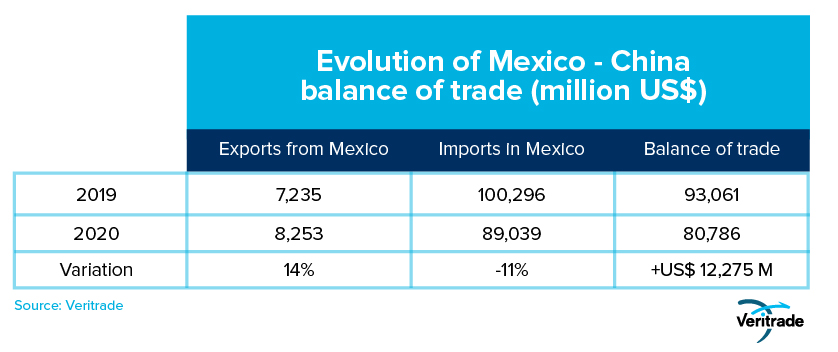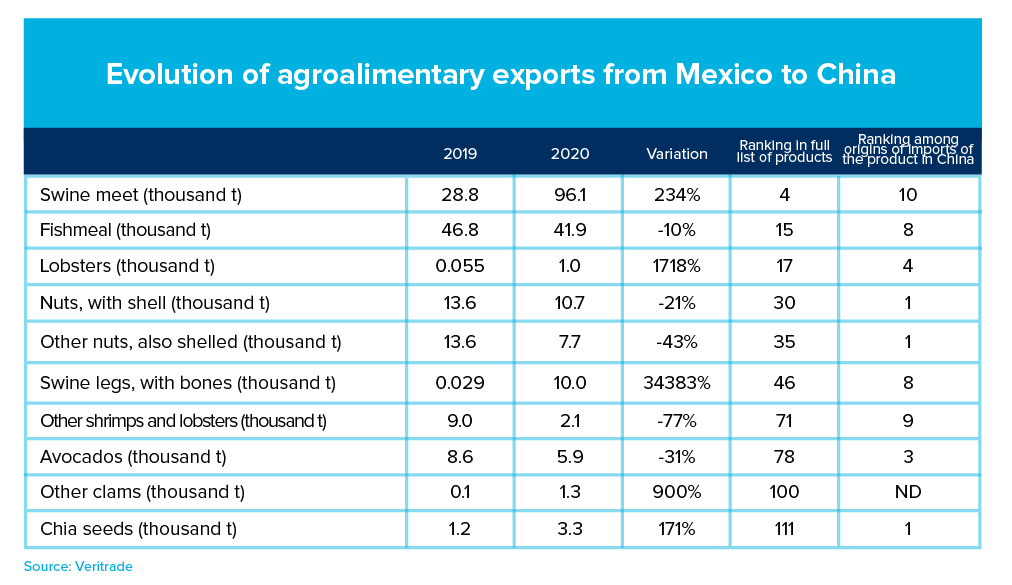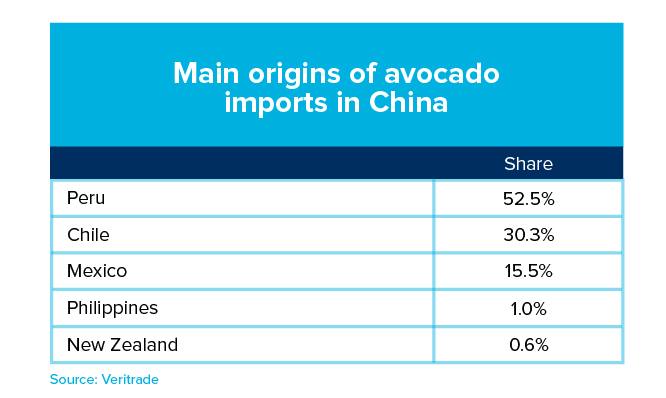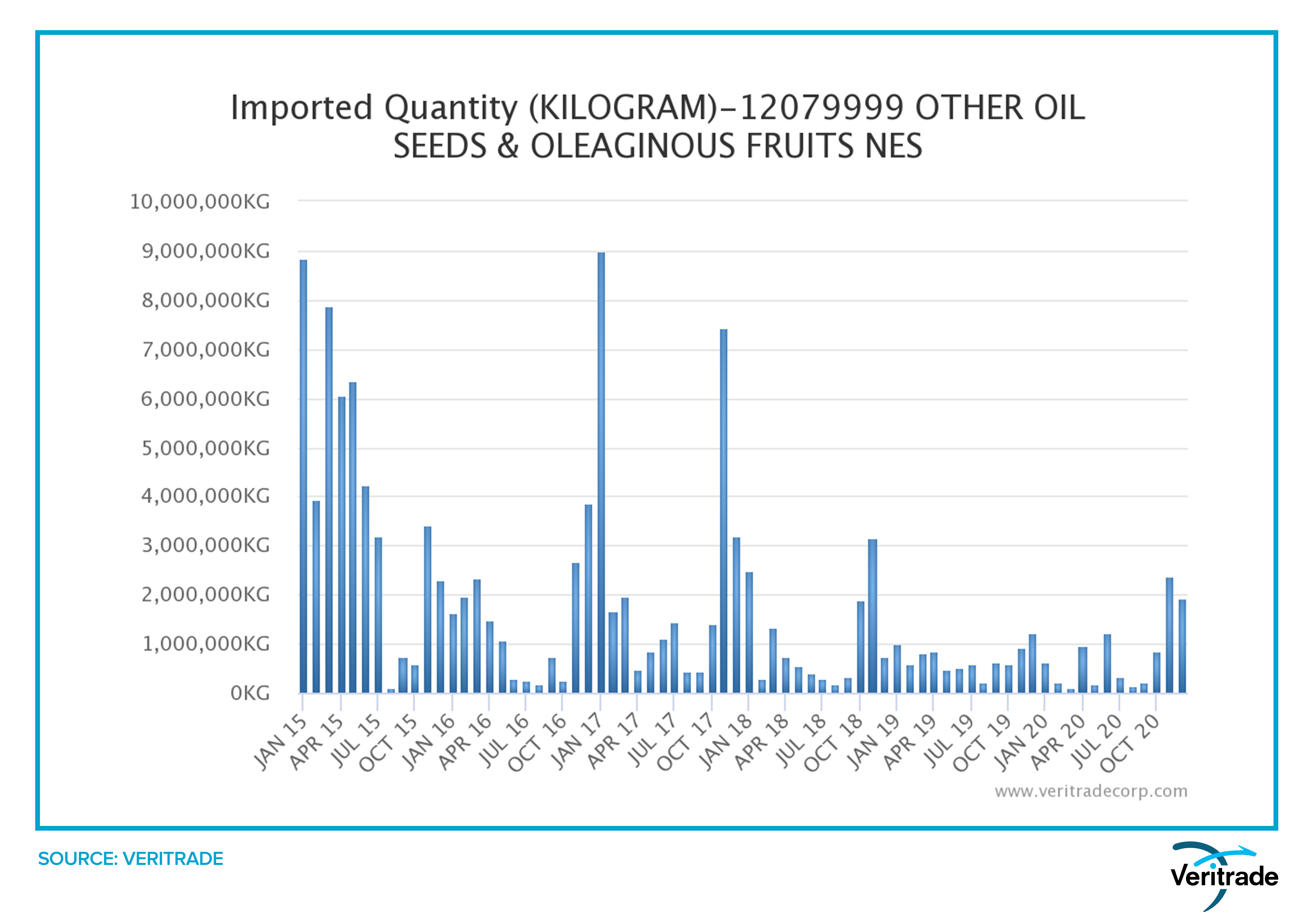China: a new growth opportunity for Mexico
Published on 19 April 2021
Sales to the Asian country are a sure source of income, especially as it is one of the first countries to recover its economy globally. Agri-food products are the star.
Mexico's competitiveness in international trade is not only based on its heavy industry and electronics, nor on its proximity to the United States. As we will see in this note, its agri-food products are being traded more frequently in other markets, among which China represents a special opportunity.

The growth in the value of Mexican exports of all types of products compared to 2019 is part of a trend that has been repeated over the last five years: on average, the increases have been 15.6% in each of those five years. However, the disproportion in the trade balance between the two countries shows that there is much potential to be exploited in exports to China, whose size as a market is reflected in the magnitude of imports. As the world's leading industrial economy, it is home to a huge mass of entrepreneurs and consumers belonging to groups with high and medium-value consumption capacity.
With this, you can already have an idea of the positioning of your product in the international market, as well as the competition you will have in the market you want to enter. The same exercise can be replicated for exports from other countries, so that you can compare the performance of campaigns in different origins.
Food: the star of the portfolio
The diversity of the biography of a bioceanic and extensive territory allows for agricultural, livestock and hydrobiological products with a high competitive potential. In the case of China, the Mexican exporters that have taken most advantage of the size of the market are livestock farmers, but producers of fruits and vegetables, as well as derivatives for the mass consumption industry, also have opportunities.
The following table shows the list of the top ten agri-food and livestock products exported from Mexico to the Asian country in the last two years. As can be seen, many of them have registered a considerable increase despite being already consolidated, and in other cases they have only recently made inroads, with successful sales.

2020 was one of the most complicated years in the history of the global economy, but food exporting countries were able to benefit from the fact that food is the most essential part of consumption baskets. It is important to highlight that although China was the first market to be strongly affected by the COVID-19 pandemic, it was also the first to recover, and for that reason exports to that destination were able to maintain a good level.
Mexico's possibilities for expansion depend on sanitary authorizations and the creation of a consumer culture. In the first case, it is expected that by 2021 it will be possible to introduce animal offal, which could complement the already consolidated supply of pork, beef and seafood products, which seem to be one of the segments with the greatest potential. But if we are talking about potential, the performance of exports of already consolidated products is perhaps the best way to understand the opportunities in China.
Avocados: a great debt
Mexico is the largest exporter of avocados globally, but has been overtaken by competitors in China. However, year-round production is a great opportunity.

If demand continues to develop, China could be a market with great opportunities for Mexican exporters. Avocados were not known to the Chinese on a massive scale until a few years ago. Today, the monounsaturated fatty acid content, and even the aspirational trend to use it as a product that shows sophistication, have allowed to start selling it more easily and Chinese avocado imports from all over the world went from 1,497 t, in 2013, to almost 44,000 t, in 2018.
2019 and 2020 were not good years because of an oversupply that was exacerbated by the pandemic, but this could be reversed by continuing to educate middle-income consumers. In other words, the recent drop should not be a disincentive, but a signal to work on business development.
Chia: repeating the dish
Chia is the other symbol of the introduction of products that are novel to the consumer, albeit with a different story. In 2020 Mexican exports of this seed dropped from a record 6,033 t (almost double the 3,265 t of 2018) to 5,126 t. However, China increased its imports despite the conjuncture, and it is worth approaching traders to analyze whether the trend could be maintained in the country.
Chia seed (other oil seeds) imports in China

It is striking that this growth has been registered. Unlike avocados, China began to produce chia after its popularization at the beginning of the second decade of the 21st century, and in 2018 it became the country with the highest exports of this seed. Despite this, in 2020 purchases of Mexican chia in this destination increased, suggesting that there could be a reversal in the downward trend due to an excess of demand with respect to local supply, or due to different issues such as quality.
A country with the capacity to adapt
Fortunately for Mexicans, their country has the potential to adapt to changes in the global industry, and better yet, to offer agricultural products, meats and hydro-biological products at competitive prices. The challenge will be to keep up with the demands of destination countries and customers, which means signing trade agreements, obtaining sanitary permits and adapting the labor force. If this is achieved, Mexico will be able to take full advantage of its experience, resources and the scale of its productive matrix.
For more information on Mexican exports to China, visit Veritrade's website.
Request your free trial at https://bit.ly/VRTFreeTrial